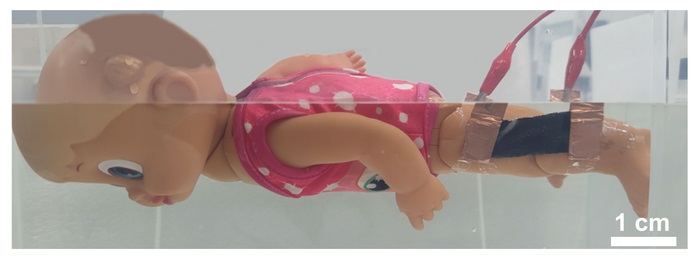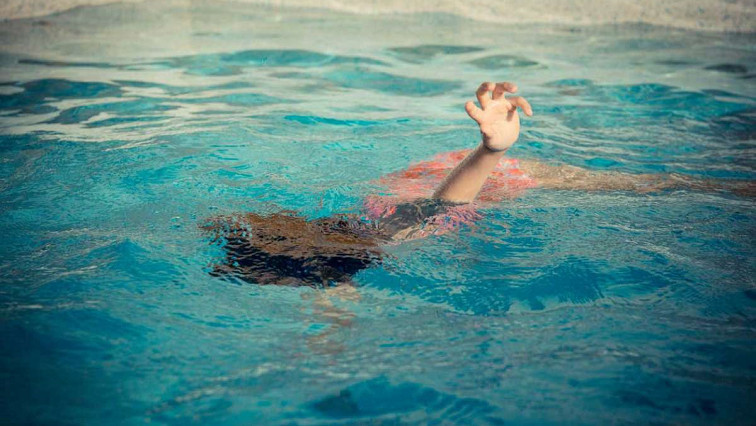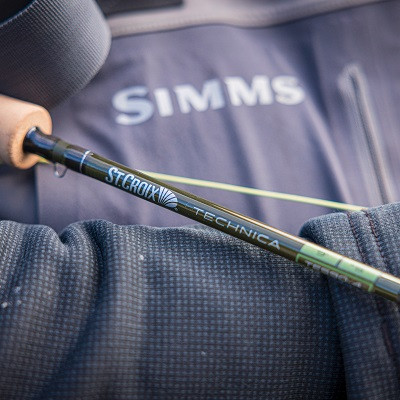Many flexible fitness trackers can’t be submerged in water because the coatings required to completely seal these devices would make them uncomfortable to wear. Now, researchers reporting in ACS Nano have applied a thin, slippery coating to conductive fabric, creating a breathable underwater movement sensor. They integrated the sensor into a smart device that wirelessly alerts a smartphone app when a swimmer stops moving, an indication that they could be drowning.
Underwater movement sensors could have many applications, such as monitoring heart rate and tracking swimmers’ activity and safety. However, current methods to protect these electronics make the devices thick and impermeable to air, which could lead to skin irritation. Previous research, though, has shown that thin, even layers of polydimethylsiloxane (PDMS) provide enough water repulsion to protect flexible movement sensors underwater, but it’s unclear whether the coating would be comfortable. So, Jianying Huang, Cheolmin Park, Yuekun Lai and colleagues wanted to test PDMS as a water-repellent coating for a fabric-based sensor that would be part of a wireless underwater movement detection system.

An underwater movement sensor attached to a motorized swimming doll’s knee alerts a smartphone app when the doll stops kicking, simulating a swimmer in distress.
To do this, the researchers dipped a piece of polyester knit fabric into a graphene oxide solution and then into hydroiodic acid. The last immersion was into a solution containing PDMS microparticles and nanoparticles. Initial tests showed that the coated fabric was conductive and water-repellent, yet still permeable to air, suggesting that the material would be comfortable to wear. When a sample of the coated fabric was attached to a person’s finger that was then bent while underwater, it produced a measurable electrical response.
The team combined the fabric-based sensor with a power supply and a data collector to create a smart underwater movement system that could wirelessly transmit the electrical response to a smartphone app. When the smart device was attached to a motorized swimming doll, the app tracked the doll’s kicking legs. To simulate a swimmer in distress, the doll’s kicking motion was turned off, and the app sent a red warning message. The researchers say that because the smart movement sensor repels water, it could help monitor swimmers’ safety and be used in other types of underwater sensors.
Read the original article on American Chemical Society (ACS).







